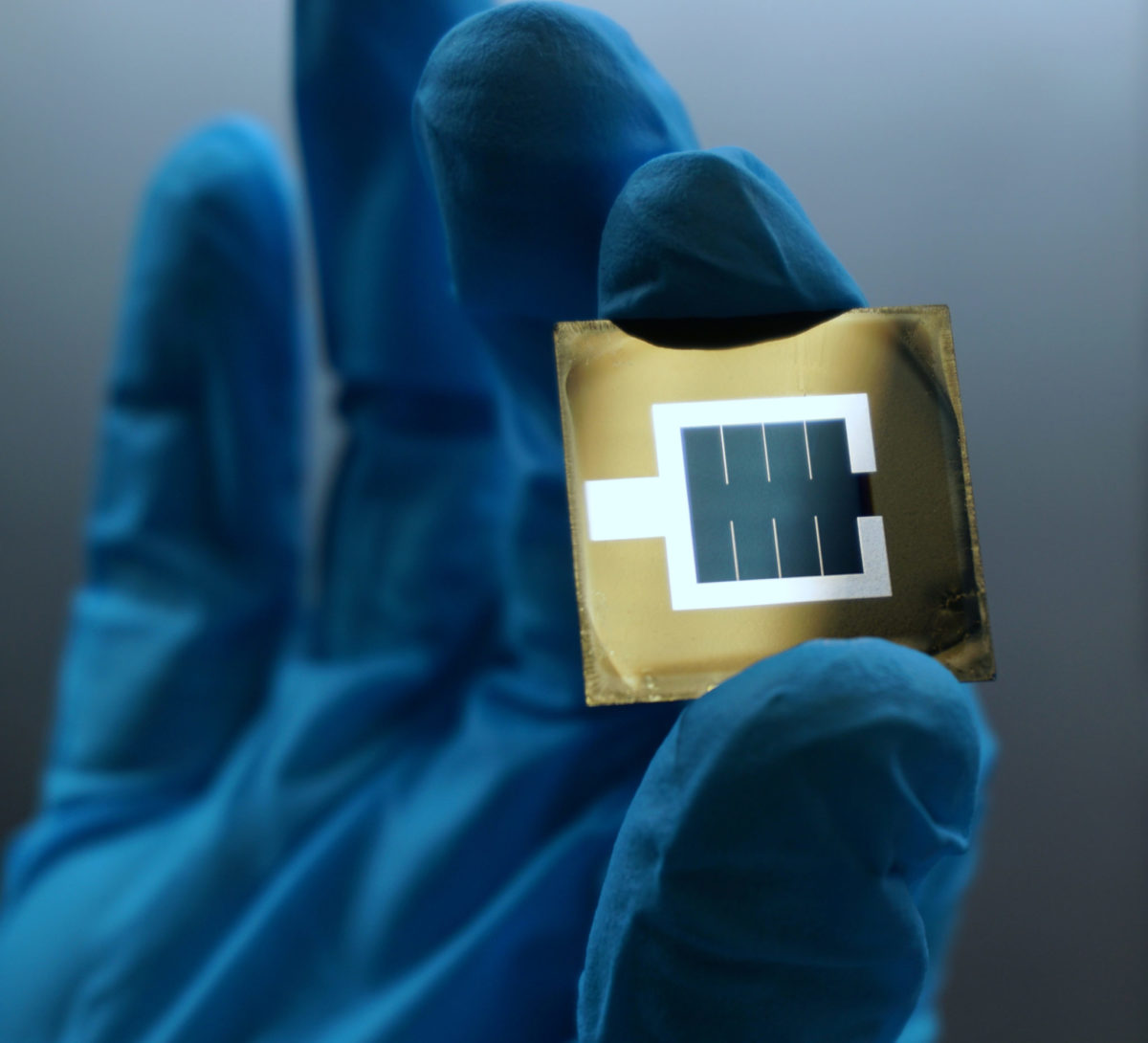From pv magazine Global
From pv magazine Germany
Scientists from Helmholtz-Zentrum Berlin (HZB) have once more broken the efficiency world record of tandem solar cells consisting of a silicon bottom cell and a perovskite top cell. The 32.5% efficiency record has been officially confirmed by the certifying institute European Solar Test Installation.
“This is a really big leap forward that we didn’t foresee a few months ago,” said Steve Albrecht from HZB’s perovskite tandem solar cell department. “All the teams involved at HZB, especially the teams from the PV Competence Center (PVcomB) and the HySPRINT Innovation Lab, have worked together excellently and with great dedication on this.
His team used an improved perovskite compound with a modificed surface. Silvia Mariotti and Eike Köhnen, both authors of the study, developed an interface modification in which charge recombination losses are largely suppressed. Furthermore, they applied special measurement methods to better understand the fundamental processes. These developments were then successfully transferred to tandem solar cells and combined with further optical improvements by Lea Zimmermann.
In recent years, there has been a continuous increase in efficiency values by various research institutions and photovoltaic companies worldwide. At the end of 2021, various teams from HZB achieved a then record value of 29.8% efficiency. To achieve this, they introduced special, periodic nanotextures into the solar cells. Then, this summer, Ecole Polytechnique Fédérale de Lausanne (EPFL), Switzerland, was able to significantly surpass that value again, achieving 31.3% efficiency with a certified tandem cell.
Now the highest value of 32.5% efficiency was again achieved by the HZB. “We are very pleased about the renewed significant leap in efficiency. This demonstrates the high potential of perovskite/silicon tandem solar cells to contribute to a sustainable energy supply and turnaround in the coming years,” said Albrecht.
HZB’s chief scientific officer, Bernd Rech, noted that “at 32.5%, the solar cell efficiency of the HZB tandems is now in ranges previously only achieved by expensive III/V semiconductors.”
Just last week, Meyer Burger signed a multi-year cooperation agreement together with several research institutes in Germany and Switzerland, including HZB. This involves the industrialization of perovskite tandem solar cells and modules.
This content is protected by copyright and may not be reused. If you want to cooperate with us and would like to reuse some of our content, please contact: editors@pv-magazine.com.








By submitting this form you agree to pv magazine using your data for the purposes of publishing your comment.
Your personal data will only be disclosed or otherwise transmitted to third parties for the purposes of spam filtering or if this is necessary for technical maintenance of the website. Any other transfer to third parties will not take place unless this is justified on the basis of applicable data protection regulations or if pv magazine is legally obliged to do so.
You may revoke this consent at any time with effect for the future, in which case your personal data will be deleted immediately. Otherwise, your data will be deleted if pv magazine has processed your request or the purpose of data storage is fulfilled.
Further information on data privacy can be found in our Data Protection Policy.